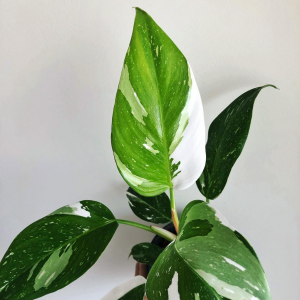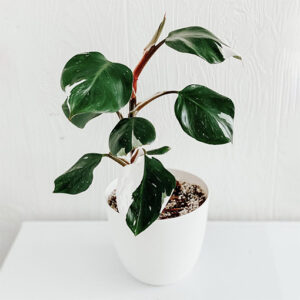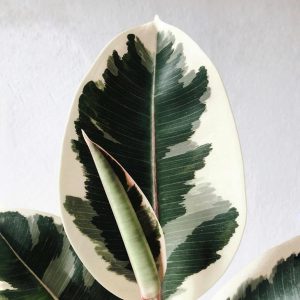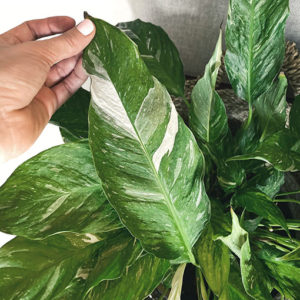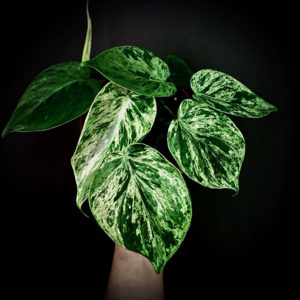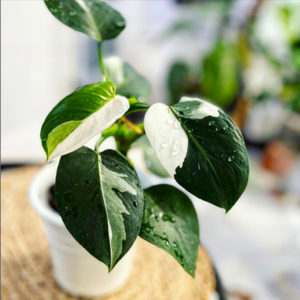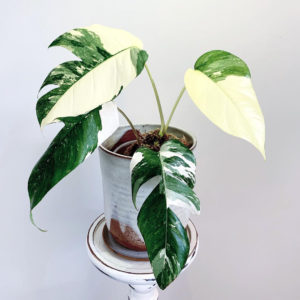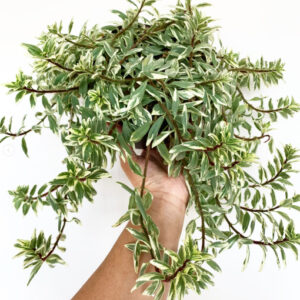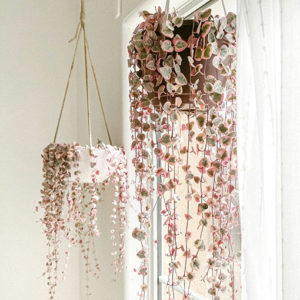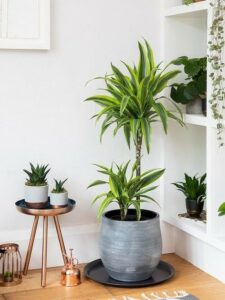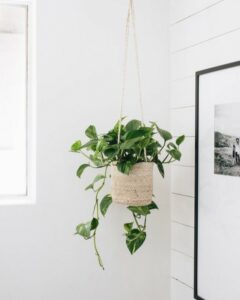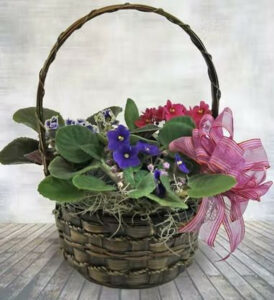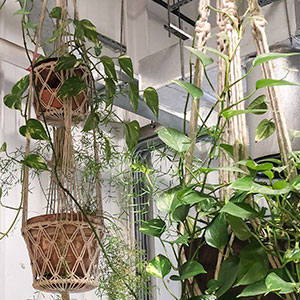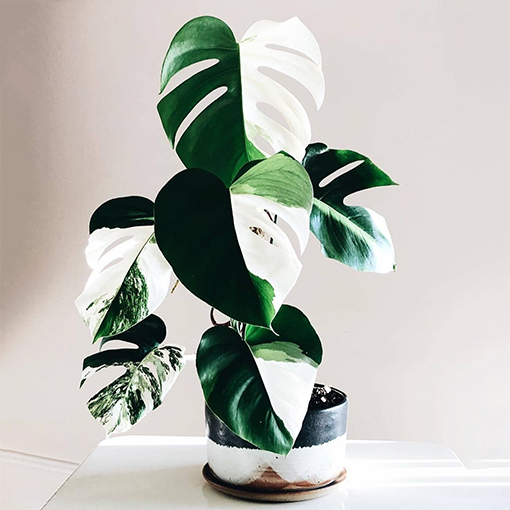
Much Hype Surrounds Variegated Plants, With Prices Often Astronomical, Is It Another Bout Of Tulip Mania Or Is There Something Truly Special About Variegated Plants? Are They Rare? Are They High Maintenance? Sit Back As We Take A Deep Dive Into Answering All Of Your FAQs About Variegated Plants! 🤩
What Is Variegation?
The term, ‘variegated’ is applied to a flower or a leaf that has a rare cell mutation that causes it to have more than just it’s ‘natural’ colour. Often this will mean the foliage is blotched, striped, or bordered with a lighter colour than that on the rest of the plant.
Variegation in leaf colour occurs because of a lack of the green pigment chlorophyll in some of the plant cells. It is usually the result of a cell mutation 🧬🔬🧪
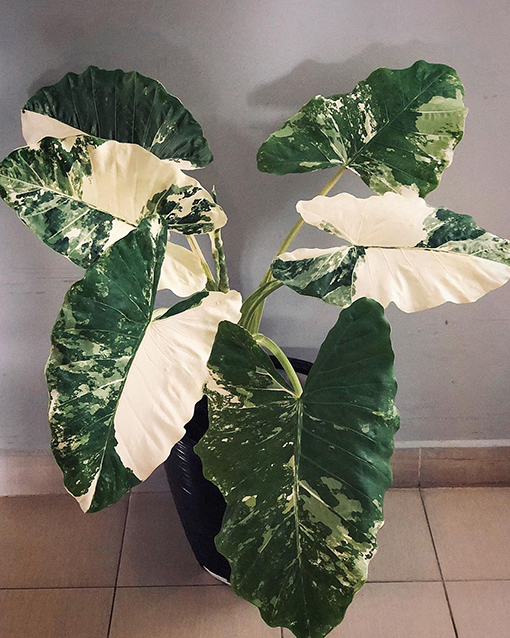
🌿 Variegated Alocasia Macrorrhiza 🌿 📷 : @ilovebeautifulplants88
Are Variegated Plants Really Rare? And Why Are They So Expensive? 💸
Rough estimates suggest that Variegated Plants occur in about 1 in 1000 plants. In nature the cell mutation is a weakness as it fails to produce energy for the plant, therefore making variegated plants in nature even more rarely seen. But considering their unique and rare beauty and the subsequent demand for variegated plants humans have found ways to propagate them albeit still slowly.
Essentially variegated plants have less surface area to photosynthesise to produce the sugars they need for growth and repair, hence why they usually need more light compared to entirely green plants and typically grow much, much slower. The stronger the variegation in a plant, the slower it grows, hence the longer it takes to propagate.
Strong variegation rarely occurs in nature and when it does, those plants are at a significant evolutionary disadvantage compared to entirely green plants as they do not photosynthesise as efficiently. The variegated plants you see going for crazy money online are all cultivated, meaning they have been bred by humans through vegetative propagation to maintain the variegated colouring.
Propagating one by one is a slow process and with Variegated Plants it can be fraught as Variegated Plants can often be unpredictable, either shooting through leaves with too much Variegation (unlikely to survive) or too little (green will generally be more dominant but this is not the desired objective).
Compounding the challenge, Variegated Plants are very difficult to achieve through Tissue Culture. Tissue Culture is the dominant way plants are produced these days with labs cloning a mother plant into thousands if little plantlets. For Variegated Plants the success rate of these little plantlets adopting the Mother plants Variegation is very low, most often reverting to pure green.
These factors combined with the high demand for these beautiful plants is a recipe for high prices (supply and demand).
Occassionally Tissue Culture Labs will have success in maintaining Variegation and in these cases we usually see prices come down as we’ve seen with Syngonium Fantasys and Monstera Thai Constellations compared to Variegated Monstera Borsigianas, which haven’t hit the market in Tissue Culture.
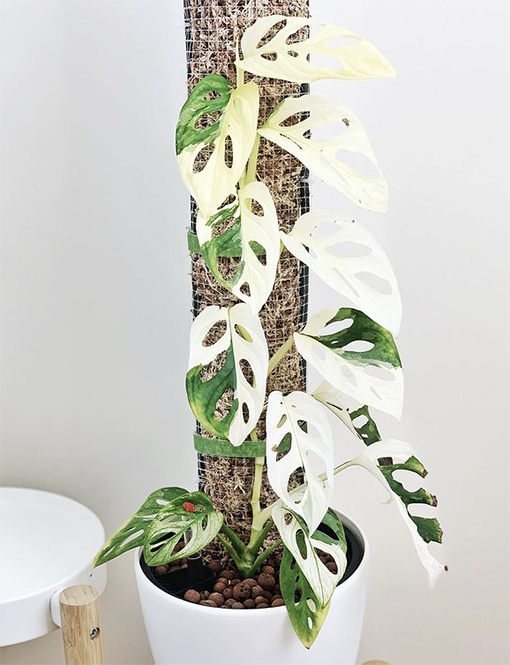
🌿 Variegated Monstera Adansonii 🌿 📷: @michelles_50plants
Are Variegated Plants Fragile? Do I Need To Take EXTRA Care With My Variegated Plants? 💞
Like all plants, each variety will require its own care regimen. That said, variegated plants tend to be on the more delicate side than their non-variegated counterparts, and generally require bright indirect light for their multi-colored leaves to thrive. Plants that are variegated as a result of genetic mutation are particularly sensitive, as they photosynthesize less due to the lack of chlorophyll on the variegated areas on their leaves. Variegated areas can be more vulnerable to burn and browning from temperature extremes.
Are There Easy Care Variegated Plants? 💞
Often easy to care for Variegated Plants will become extra popular as if you’re investing reasonable money you want some confidence that it will do well. There are many easy care Variegated Plant Species, Variegated Monstera Borsigiano is generally considered a fairly easy plant to care for. Others include Variegated Aspidistras, Variegated Syngonium Fantasys, Variegated Epipremnum Pinnatums to name a few.
My Plant Used To Be Variegated But Not Anymore, Whhhhhhy?! 😩
Variegated plants can revert or turn green for a number of reasons. It can be a reaction to extremes of hot and cold or a reaction to low-light levels. Some say it could also be caused as a survival technique, as the plant is stronger when it has more chlorophyll. When this happens, the best thing to do is prune out the affected leaves because if you don’t, the plain green can actually take over the plant because it’s got more chlorophyll and vigour than the variegated foliage.
How Can I Promote More Variegation?
Having plants in Bright Indirect light is believed to be one of the best ways to promote further Variegated growth.In saying that, plants can have a mind of their own and occassionally plants will naturally be heading towards less or more variegation which you can often get clues of by inspecting the levels of variegation in the stems, where the next leaf will grow from. If a plant does start producing plain green leaves, the only real option is to cut that leaf off or perhaps even trim back more aggressively and hope that future growth adopts the line of being more Variegated. It can at times be one part art and one part luck.
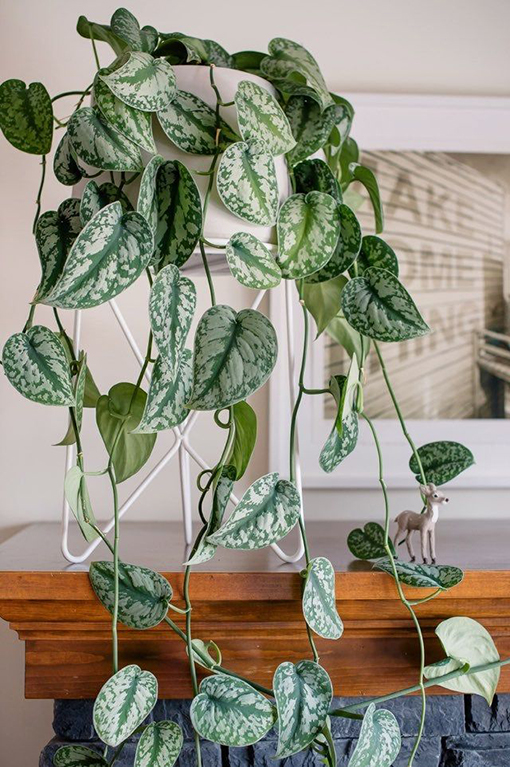
🌿 Silver Satin Pothos 🌿 📷: @mercari
What Are The Types Of Variegation? 🌿
Natural variegation – Sometimes also referred to as pigmented variegation, these plants are naturally patterned. The pattern of their leaves is written into their DNA, and every single leaf will grow with this pattern. Though this happens naturally, horticulturists often create cultivars, or hybrid species, to accentuate the natural patterning. Some popular indoor plants and cultivars with natural variegation include the Silver Evergreen, Magenta Triostar, Snake plant and Pink Rubber Tree.
Chimeral variegation – This type of variegation is caused by genetic mutation where some tissue of the plant is able to produce chlorophyll and other tissue is not. The result is a plant with white areas randomly mixed with green areas on leaves, like the incredibly popular yet hard to find Variegated Monstera.
Reflective variegation – Also known as blistered variegation, reflective variegation naturally occurs when tiny air pockets (blisters) are formed between the different layers or tissues of the plant. When light hits these areas, it is reflected, creating a type of silver shine like on the Satin Pothos.
Are The Variegations Always White?
You guessed it from the image below! No they aren’t always variegated white! Variegation means when a plant has areas of different colour. In the case of the Philodendron Pink Princess, that color is pink. In many other plants, it may be a creamy white, yellow, purple and other variations 💩💦☀️🌡
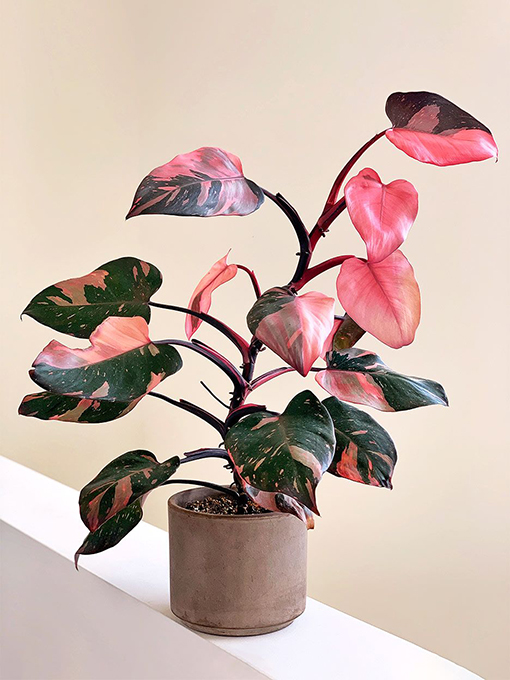
🌿Philodendron Pink Princess 🌿 📷: @cubehousejungle

